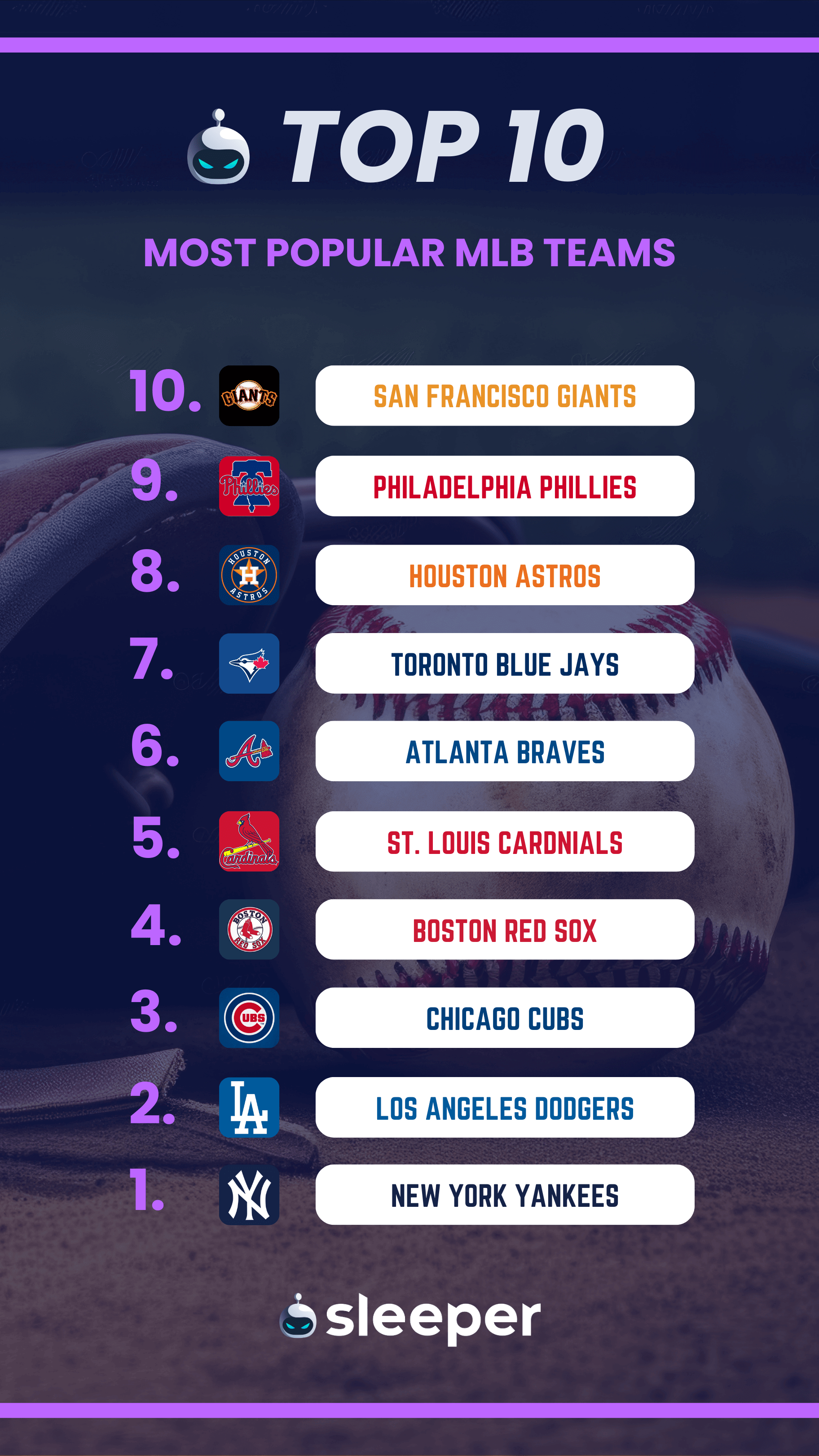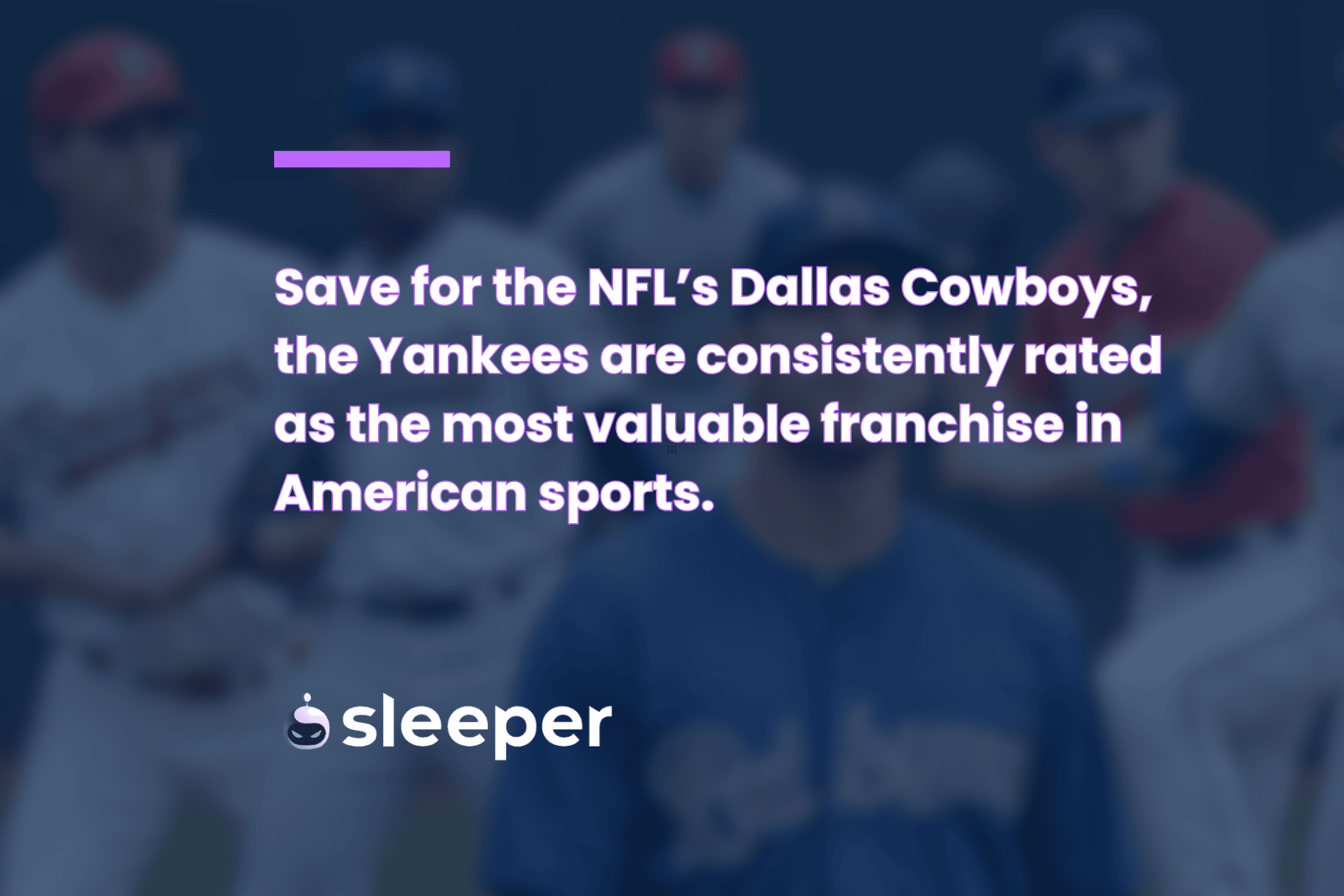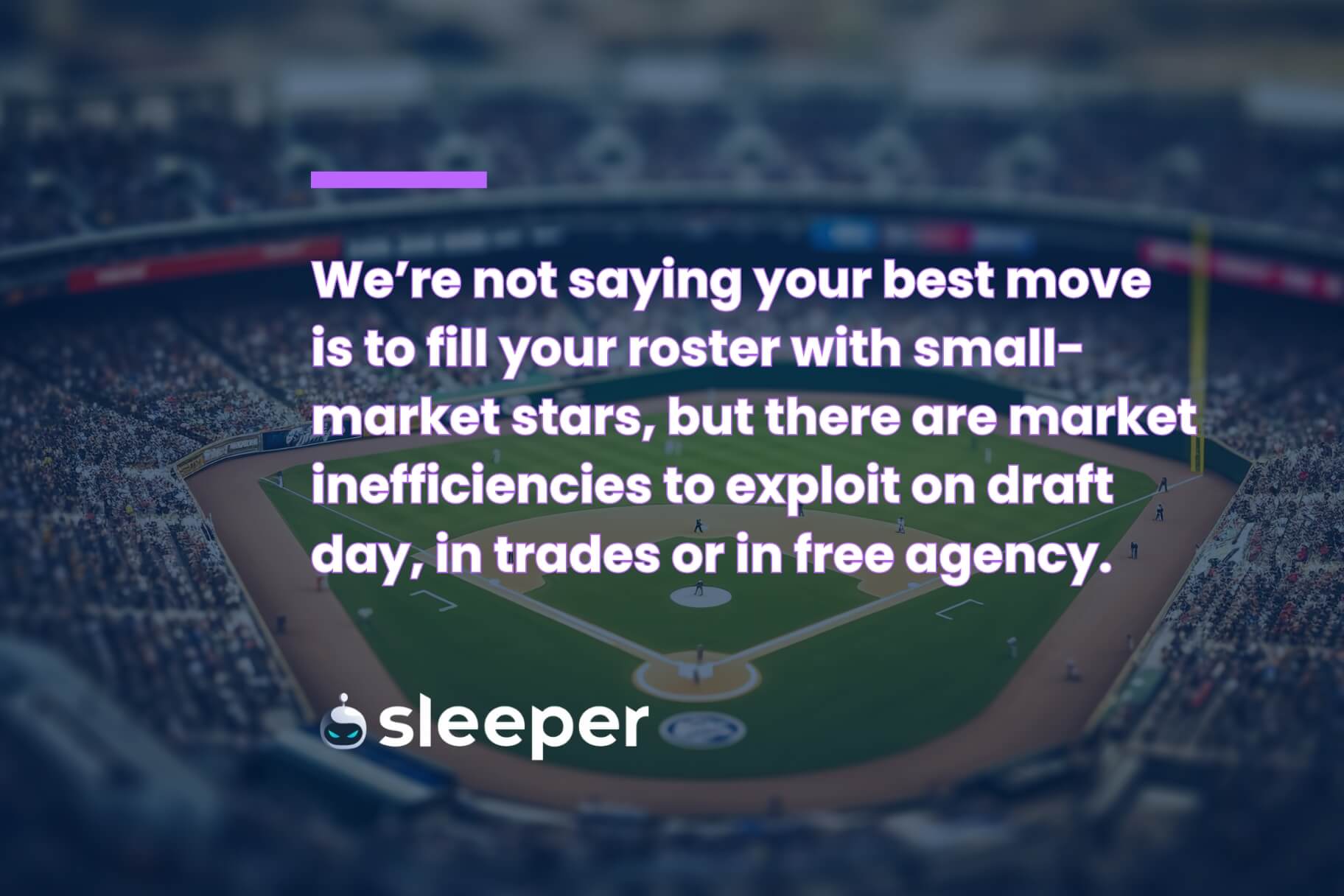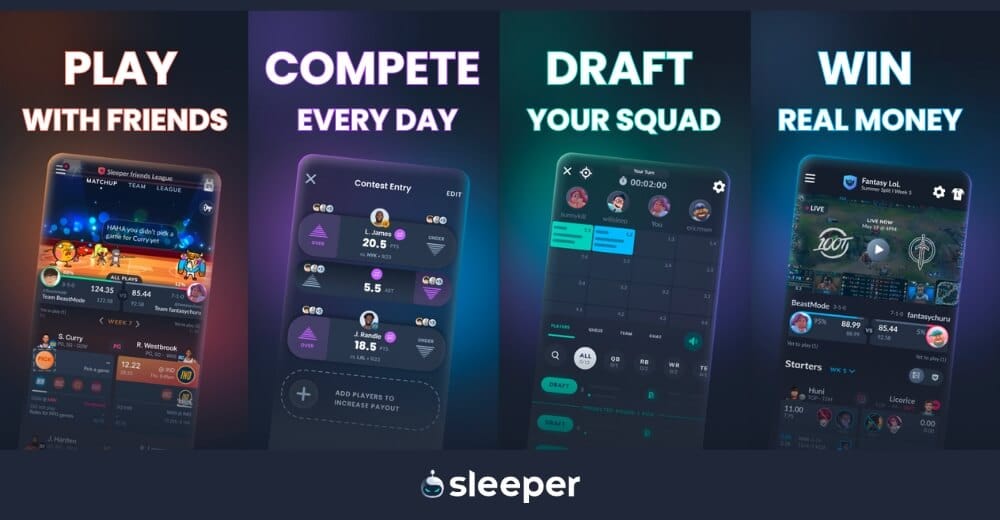From ticket sales and social media followers to World Series rings, ranking MLB franchises by popularity is less of a debate and more of a math problem.

Football is, by no small margin, the most popular sport in the U.S. today, and has been for decades.
Baseball is the national pastime, though, and still wildly popular.
Well, some of the franchises are wildly popular. Others sure do seem to have a lot of fans dressed up as empty seats on a regular basis. If you’ve ever wondered how the 30 teams stack up against each other in terms of popularity, this is the list for you.
Using a combination of average attendance in recent seasons, social media following and historical relevance (i.e. World Series titles), we’ve ranked ‘em all from the mighty New York Yankees right on down to the two teams in Florida that can’t ever seem to draw a crowd.
All 30 MLB Teams, Ranked by Popularity

1. New York Yankees
Even if you don’t follow baseball in the slightest, you probably expected to see the Yankees at No. 1.
Save for the NFL’s Dallas Cowboys, the Yankees are consistently rated as the most valuable franchise in American sports. They might even rank ahead of the Cowboys as the biggest “you either love ‘em or you hate ‘em” team that has ever existed.

2. Los Angeles Dodgers
They churned through a bunch of different nicknames during their time in Brooklyn, but the Dodgers have become an MLB institution in L.A.
Even with L.A. infamous for its traffic jams, the Dodgers sold 1.1 million more tickets between 2022-23 than the second-best team on the list. However, with the Yankees boasting over a million more followers on X — not to mention 20 more World Series titles — it’s not exactly a close debate for the top spot. NYY is the very clear No. 1, but LAD is almost undebatable at No. 2.
3. Chicago Cubs
Prior to 2016, if you found out someone was a Cubs fan, you instantly felt sorry for them. The “Curse of the Billy Goat” was almost bigger than the franchise itself, with Steve Bartman of ‘03 NLCS fan interference infamy practically rivaling Ernie Banks and Ryne Sandberg for the title of most noteworthy name in franchise lore.
Through it all, though, the fans persevered. Attendance understandably hasn’t been quite as strong after a fire sale at the 2021 trade deadline, which ushered in a semi-rebuild, but there still have been comfortably north of 30,000 fans per game at Wrigley Field.
4. Boston Red Sox
For decades, these were the American League’s lovable losers who simply could not break the “Curse of the Bambino.” But did you know Boston has won more World Series titles since 2000 than any other franchise?
Making average attendance a key factor in the ranking was perhaps a bit unfair to the Red Sox, as Fenway Park almost has the lowest capacity of the 30 big league stadiums. Even with that handicap, though, they were top 10 in attendance, top five on social and backed by just about the entirety of New England.
5. St. Louis Cardinals
The Cardinals aren’t even top 10 in X followers, but the franchise that ranks second in World Series titles was also second in average attendance, joining only the Dodgers in the “more than 40,000 tickets sold per home game” club in 2022-23.
It’s a curious dichotomy, and it’s not an exclusively “Missouri Thing,” as the Royals are in the opposite boat with a middling social following and a bottom-five rank in average attendance. But who cares about the tweets and DMs as long as the fans keep sliding into Busch Stadium like they have been for decades?
6. Atlanta Braves
From 1973-2007, if you had a cable package with TBS — no matter where in the country you lived — you were able to watch nearly every Braves game. It certainly didn’t hurt their popularity that the ever-present franchise had all-time greats like Greg Maddux and Chipper Jones while reeling off 14 consecutive division titles toward the end of that run on national TV.
If Truist Park were any bigger, Atlanta might rank a little bit higher. Over the two seasons in question, the Braves were at 95% capacity, trailing only the Padres for highest percentage of seats filled on average.
7. Toronto Blue Jays
If you’re surprised to see Toronto this high on the list, join the club. Every team in the top six has been around for at least seven decades longer than the Blue Jays, who haven’t amounted to much outside of winning back-to-back World Series rings more than three decades ago.
Keep in mind, though: This is Canada’s team. And as far as population among North American cities is concerned, Toronto ranks behind only Mexico City, New York City and Los Angeles. We might actually be underselling the size of Toronto’s following by not having the Blue Jays in the top five.
8. Houston Astros
A decade ago, Houston probably wouldn’t have even cracked the top 20. At that time, the Astros were mired in a lengthy rebuild, had never won a World Series and were averaging around 20,000 fans per home game, squandering all the goodwill generated during what was a fun, “Killer Bees”-fueled run from 1997-2005.
Now, though, the Astros have become the inevitable postseason force and (thanks to that trash-can-banging scandal) loathed-by-everyone-else franchise that the Yankees used to be. Their throngs of loyal fans have embraced an “us against the world” mindset, and, well, they aren’t wrong.
9. Philadelphia Phillies
If this were a ranking of most passionate fan bases as opposed to most popular, the Phillies would have a strong case for No. 1 — despite suffering the most losses of any franchise and boasting an all-time winning percentage that ranks in the bottom five among active clubs.
That’s just the Philadelphia way, though. They’ll stay home if the team sucks and they’ll be openly critical even when things are going mostly well, but they’ll also rally together like a swarm of locusts against any outsider who dares to say anything untoward about one of their guys.
10. San Francisco Giants
It’s surely somewhat a product of so many residents leaving San Francisco during/after the COVID pandemic, but attendance at Giants games simply is not what it used to be. After averaging around 40,800 from 2010-19, they were at roughly three-quarters of that mark from 2022-23 — this despite a franchise-best 107-win season in 2021 that should have increased ticket sales.
With eight World Series titles, including that “Even-Year Giants” run from early in the 2010s, though, they aren’t exactly hurting for fans.
11. New York Mets
From their humble beginnings as a team that averaged 108 losses in its first six seasons of existence, the Mets have been the little brother desperately trying (and always failing) to match the fanfare of the nearby Yankees.
As it turns out, though, second fiddle in New York is still better than most, with the Mets ranking in the top 50% in the majors in both attendance and social. Perhaps spending in recent years like there is no tomorrow will bring even more support to what has become one of the most cursed teams in any North American sport.
12. Los Angeles Angels
If you thought losing Shohei Ohtani to the other L.A. team would make fans abandon this franchise that hasn’t won a single postseason game since 2009, think again.
The Angels were popular long before Ohtani, with an average attendance north of 37,000 every season from 2003-19. And even losing a global superstar before flirting with their worst winning percentage in franchise history in ‘24 hasn’t done much of anything to drive fans away.
13. Texas Rangers
After coming close in both 2010 and ‘11, the Rangers finally got over the hump and won their first World Series in ‘23, breaking that seal in their 63rd year as a franchise.
Though it took more than six decades to win one, they’ve always been popular in Arlington. Even in 2021 when the team was a 102-loss mess and while COVID restrictions/fatigue resulted in most teams reporting drastically lower attendance marks than they had in 2019, Rangers fans continued to come out in droves, ranking fourth in average attendance that year.
14. Detroit Tigers
It has been tough sledding for the Tigers since the early 2010s, when having three surefire future Hall of Famers (Miguel Cabrera, Justin Verlander and Max Scherzer) together in their primes translated to a lot of wins and a lot of fans. Their average attendance figures for 2022-23 were barely half of what they were in ‘12-13 (37,725).
This merely feels like a dormant period, though, with fans who will be ready to spend money to support the team again just as soon as ownership feels like doing the same.
15. Chicago White Sox
With the White Sox checking in at No. 15, all six franchises from the three two-team cities landed in the top half of the rankings. As with the Mets in New York and the Angels in Los Angeles, though, there’s really no question that the White Sox are the second-most popular club in their own backyard.
It will be interesting to see how the historically awful 2024 campaign impacts this team’s popularity for the subsequent decade. Fans on Chicago’s South Side are plenty accustomed to mediocrity over the past century-plus, but it’s hard to support a dumpster fire when it doesn’t even appear to be rebuilding.
16. Cincinnati Reds
It has been a long time since the Big Red Machine ruled the 1970s, as Cincinnati hasn’t even been to an NLCS since 1995. But Elly De La Cruz is ushering in a “kids all around the country” fandom boost on par with what Ken Griffey Jr. did for Seattle in the 1990s.
At least dating back to 2000, Cincinnati has never ranked top-10 in payroll, but they better hand a blank check to the speedy superstar shortstop putting this franchise back on the map.
17. Cleveland Guardians
They have the longest active World Series drought by a margin of two decades over their closest competition, and they changed their controversial nickname a few years ago.
Nevertheless, Cleveland has an impressively-sized following for what is a fairly small-market franchise. It did make the postseason 13 times from 1995-2022, though, so it has at least been entertaining while waiting more than three-quarters of a century to win another title.
18. Kansas City Royals
It’s hard to blame fans in K.C. for not packing the stadium from 2022-23 as the team went a combined 121-203. Even with the team playing well in ‘24, though, the Royals still ranked bottom five in the majors in average attendance.
It did improve by nearly 5,000 fans per game, though, and the legend of Bobby Witt Jr. has only just begun. With that superstar signed through at least 2030—possibly ‘37, depending on options in his contract—having that type of face of the franchise might help push them up into the top 10 in popularity over the next half-decade.
19. San Diego Padres
Top five in attendance but bottom five in social following, San Diego was the toughest team to place in this ranking.
Prior to beginning to substantially jack up their payroll in 2021, though, the Padres were consistently middle of the pack in terms of attendance and tied with the Brewers for longest-active franchise to never win a World Series. Their popularity has undeniably increased in recent years, though.
20. Seattle Mariners
While the Blue Jays represent all of Canada, they’re at least reasonably close to Detroit and Pittsburgh. As far away as it is from the next-closest MLB team, though, Seattle might as well be in Alaska, representing the entire Pacific Northwest and then some.
Despite maybe the biggest geographical footprint for its fan base and despite the fact that around 99.9% of kids who fell in love with baseball in the 1990s did so at least in part because of Ken Griffey Jr., the Mariners barely cracked the top 20. Going 21 years between postseason appearances from 2001-22 was surely a factor.
21. Milwaukee Brewers
Milwaukee is consistently at or very near the bottom of the league for market size. It has never been able to spend much in free agency, has never won a World Series, hasn’t even played in a World Series since 1982. It doesn’t have anywhere near the deep-rooted history back to the early 1900s that more than half of MLB teams can claim.
Despite those impediments, the Brewers have been middle of the pack or better in terms of average attendance for more than two decades. Respect.
22. Baltimore Orioles
A few decades ago, Orioles Park at Camden Yards was the place to be, ranking top four in the majors in average attendance every year from 1992-2000. We’re talking well north of 40,000 fans per game every year for just under a decade toward the end of Cal Ripken Jr.’s playing days.
Fans are definitely coming back now that the team has emerged from what was a painful rebuild from 2018-21, but it’s still a far cry from the good ol’ days, when Eutaw Street was just one big party fueled by Boog’s BBQ and Natty Bohs.
23. Washington Nationals
It’s a shame for the Nationals that their lone World Series ring came right before a global pandemic that resulted in a truncated season with no fans in stadiums, and that they were in a full-blown rebuild by the time the subsequent campaign began. They never got the type of post-championship bump that most title teams enjoy.
All the same, the Nats are not too shabby for a club that has been in its current city for fewer years than any other active franchise. The average attendance over their final seven seasons in Montreal was barely 10,000, so 24,000+ on a regular basis during a multi-year rebuild sure seems to suggest it was the right decision to relocate.
24. Minnesota Twins
This small-ish market club has fared reasonably well on the attendance front since winning those World Series in 1987 and ‘91, peaking with a little under 40,000 tickets sold per home game in ‘10-11.
At least they finally won a postseason series again in 2023, entering that October on an 18-game losing streak in the playoffs dating back nearly two decades. Maybe that inspired some new hope in the Twin Cities.
25. Oakland Athletics
Oakland’s attendance and social media numbers are embarrassingly low, dead last in the former and only edging out the Marlins in the latter. However, the lack of fan interest in this franchise has been a recent development, fueled by the worsening, dilapidated state of the Oakland Coliseum, the ownership’s unwillingness to spend money and, ultimately, the decision to move the club to Las Vegas.
A few years ago, though, this small-market team that is tied with Boston for the third-most World Series titles in MLB history was at least respectable from an attendance perspective.
26. Arizona Diamondbacks
Of the four franchises MLB added in the past four decades, Arizona has the most loyal following. The Diamondbacks’ all-time winning percentage is almost identical to that of Tampa Bay, but their attendance dwarfs the Rays’ on an annual basis.
It certainly doesn’t hurt Arizona’s case that Luis Gonzalez’s walk-off hit against Mariano Rivera in Game 7 of the 2001 World Series remains one of MLB’s most memorable moments in decades. That’s one way to gain a following in your fourth year of existence.
27. Pittsburgh Pirates
There’s a proud history in Pittsburgh from a lifetime ago.
Save for the blip in the middle of the 2010s when Andrew McCutchen led this team to three consecutive postseason appearances, though, Pirates games over the past three decades have mostly been an excuse for Steelers fans to get together and talk about football over pierogies and a few drastically marked up Iron City beers.
28. Colorado Rockies
The Rockies rarely rank top 10 in anything other than first-round draft position, but games at Coors Field between the 2022 and 2023 seasons darn near ranked top 10 in attendance.
It’s not because Denver is crawling with die-hard Rockies fans, though. It’s because the tickets are cheap, the beers are refreshing, the mile-high sights are beautiful and a whole bunch of transplant fans always show up to root for the visiting team.
29. Tampa Bay Rays
A new, $1.3 billion stadium coming in 2028 will keep the Rays in Tampa/St. Petersburg for decades to come. But is a new park practically right next door to the current one going to fix the attendance woes that have plagued this franchise since its second year in the league?
The Rays have been pretty consistently pretty good since dropping the “Devil” from their nickname during the 2007-08 offseason, but it has yet to translate into the type of rabid following befitting of a club that landed behind only the Dodgers and Yankees in total wins from ‘08-23.
30. Miami Marlins
Even in the rare years when the Marlins have been good, no one in South Florida much cared. Their average attendance during the regular season en route to the 2003 World Series title was barely 16,000, and the team’s official X account has fewer followers than Showtime’s page for Dexter.
Translation: Fictional serial killers in Miami have more fans than the professional baseball team.
Does MLB Teams’ Popularity Matter in Fantasy Baseball?
Think about this one: Can a team’s market impact a player’s popularity in fantasy baseball?
Once a player reaches a certain level of popularity, it hardly matters where he plays. Julio Rodríguez playing for Seattle, Witt Jr. playing for Kansas City and Corbin Carroll playing for Arizona didn’t stop any of those phenoms from becoming unanimous top-10 picks, if not all top-five selections heading into the 2024 campaign.
However, because of the limited popularity of their respective teams, becoming the well-known stars they are today took a bit longer than it would have if they had come up with, say, the Yankees or Dodgers — or the Braves, as evidenced by Michael Harris II immediately becoming a household name and an NL Rookie of the Year threat (and ultimate winner) after his midseason arrival with Atlanta in 2022.
It’s not just a phenomenon with rookies, either.
Arizona’s Ketel Marte hit 25 home runs in 2023 and was a career .280 hitter across his first nine years in the majors, but he wasn’t even a consensus top 100 pick in fantasy drafts heading into ‘24. Brent Rooker hit 30 homers and was an All-Star in ‘23, but Oakland’s stud DH went undrafted in the vast majority of leagues the following spring.
There’s also the equal but opposite reaction, where people are almost too eager to notice if a struggling veteran on a popular team gets hot for a few days, whereas it takes almost a month of solid play to generate the same amount of buzz in the less ravenous markets.
This isn’t to say your best recourse to winning your league is by filling out your roster with small-market stars. There are definitely some market inefficiencies to exploit, though, whether it’s on draft day, in trade negotiations or while perusing the list of players available in free agency.
Moreover, if you’re playing in a fantasy league with friends and you know who they root for, be sure to consider/exploit that, too. If you feel like trading away Bryce Harper and there’s a Phillies fan in your league, it’s likely that person will be willing to offer plenty for him.

See Also:
Frequently Asked Questions
How/why does market size impact a franchise’s popularity?
In some cases, it doesn’t. St. Louis is in the bottom 20% of the league in market size, but top 20% in popularity. Oakland’s split goes in the opposite direction. But a bigger market means more fish and a wider net to cast while trying to get fans both into the stadium and watching games on television.
On the TV front, though, things have changed in the streaming era. It used to be that most people could consistently watch their local team on cable and that’s about it. Now, however, if you have an MLB.tv subscription but don’t pay for cable anymore, the local team is just about the only one you can’t watch.
Which MLB team is worth the most money?
It’s the Yankees, and it’s not even close.
Heading into 2024, Forbes had the team’s value listed at north of $7.5 billion – more than $2 billion greater than the second-place Dodgers. At the opposite end of the spectrum, the Marlins were last, though still with an estimated value of $1 billion.
Who has the loudest fans in Major League Baseball?
Anecdotally, it’s the Phillies fans who get the rowdiest; however, there’s no empirical evidence to that end.
In theory, it should be the teams who play in domes or parks with a retractable roof that generate the most noise, because of the way the crowd noise would reverberate off the ceiling. But until there has been a potential walk-off situation in Game 7 of a World Series in every ballpark (with a decibel meter present, too), it’s impossible to say.
In Summation
The Yankees may be the clear-cut pick for the most popular MLB franchise, but Sleeper is quickly becoming a clear-cut pick as the most popular destination for fantasy sports. The app is top notch, and its fantasy offerings are plentiful, from breaking news, to Sleeper Picks to season-long leagues. If you haven’t already done so, join by signing up on the website or by downloading the Sleeper app and check it out today.




